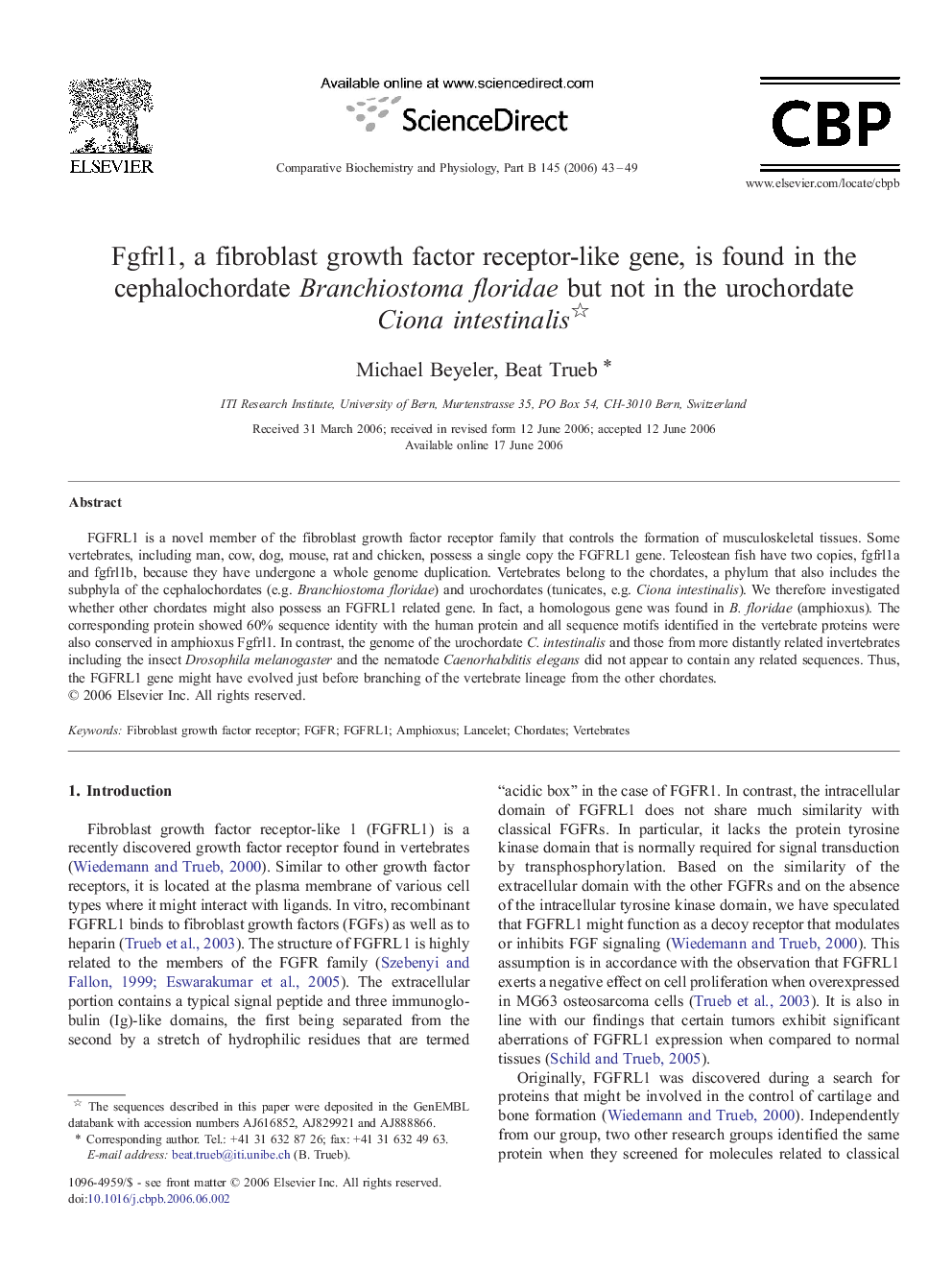| کد مقاله | کد نشریه | سال انتشار | مقاله انگلیسی | نسخه تمام متن |
|---|---|---|---|---|
| 1976981 | 1060715 | 2006 | 7 صفحه PDF | دانلود رایگان |

FGFRL1 is a novel member of the fibroblast growth factor receptor family that controls the formation of musculoskeletal tissues. Some vertebrates, including man, cow, dog, mouse, rat and chicken, possess a single copy the FGFRL1 gene. Teleostean fish have two copies, fgfrl1a and fgfrl1b, because they have undergone a whole genome duplication. Vertebrates belong to the chordates, a phylum that also includes the subphyla of the cephalochordates (e.g. Branchiostoma floridae) and urochordates (tunicates, e.g. Ciona intestinalis). We therefore investigated whether other chordates might also possess an FGFRL1 related gene. In fact, a homologous gene was found in B. floridae (amphioxus). The corresponding protein showed 60% sequence identity with the human protein and all sequence motifs identified in the vertebrate proteins were also conserved in amphioxus Fgfrl1. In contrast, the genome of the urochordate C. intestinalis and those from more distantly related invertebrates including the insect Drosophila melanogaster and the nematode Caenorhabditis elegans did not appear to contain any related sequences. Thus, the FGFRL1 gene might have evolved just before branching of the vertebrate lineage from the other chordates.
Journal: Comparative Biochemistry and Physiology Part B: Biochemistry and Molecular Biology - Volume 145, Issue 1, September 2006, Pages 43–49